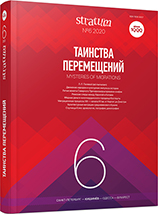Элитное погребение позднего этапа правления династии Северная Вэй с солидом византийского императора Анастасия I
Elite Tomb of the Late Period of Northern Wei with a Solidus of Byzantine Emperor Anastasius I
Author(s): Petr V. Shuvalov, Daniil Shulga, Maria Andreevna KudinovaSubject(s): History, Archaeology, Diplomatic history, Middle Ages, 6th to 12th Centuries
Published by: Издательский дом Stratum, Университет «Высшая антропологическая школа»
Keywords: China; Northern Wei; elite tombs; Byzantine coins; China-Byzantine contacts; Silk Road;
Summary/Abstract: A solidus of Byzantine Emperor Anastasius I (or its imitation) was found during the excavation of a brick tomb in Luoyang, Henan Province, in Central China. According to the location and construction of the tomb, the structure and characteristics of grave goods (partly preserved, because the tomb had been looted), the tomb can be dated back to the final period of the Northern Wei dynasty, i. e. to 525—534 AD, and presumably belongs to the one of the late Northern Wei rulers, most probably to Yuan Gong, Emperor Jiemin (period of reign: 531—532 AD). The gold solidus unearthed from the tomb is classified as MIB-Anastasius-4 type and dates back to the period of 492—507 AD. A short time interval between its coining and getting into the grave suggests the high intensity of China-Byzantine contacts during 5th—6th centuries AD. Sogdian and Hephthalite embassies probably played a mediating role in this communication.
Journal: Stratum plus. Археология и культурная антропология
- Issue Year: 2020
- Issue No: 6
- Page Range: 253-260
- Page Count: 8
- Language: Russian
- Content File-PDF

